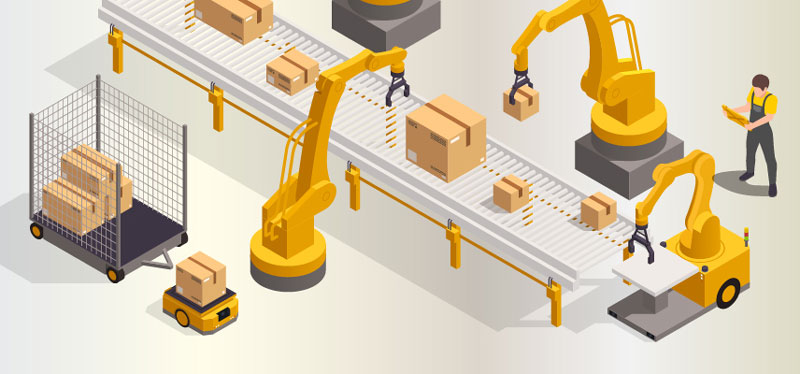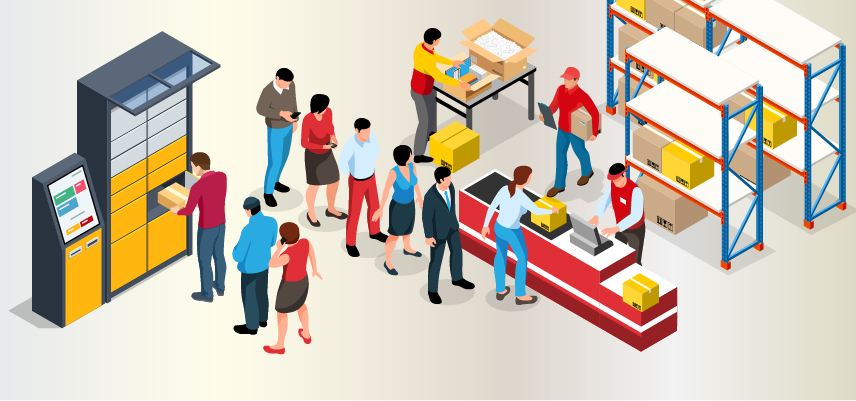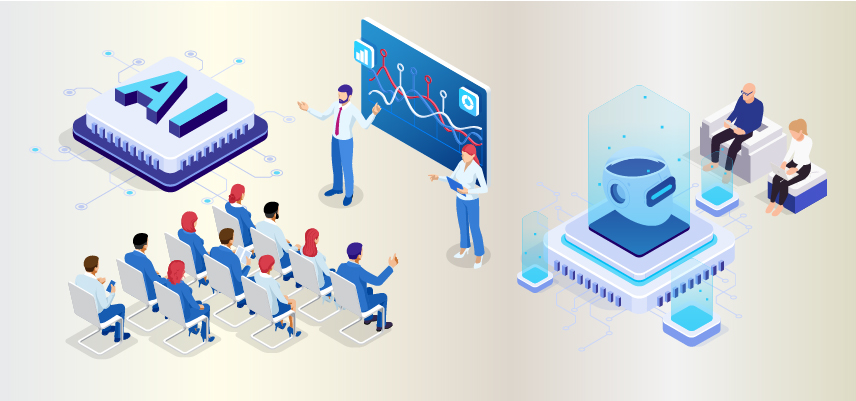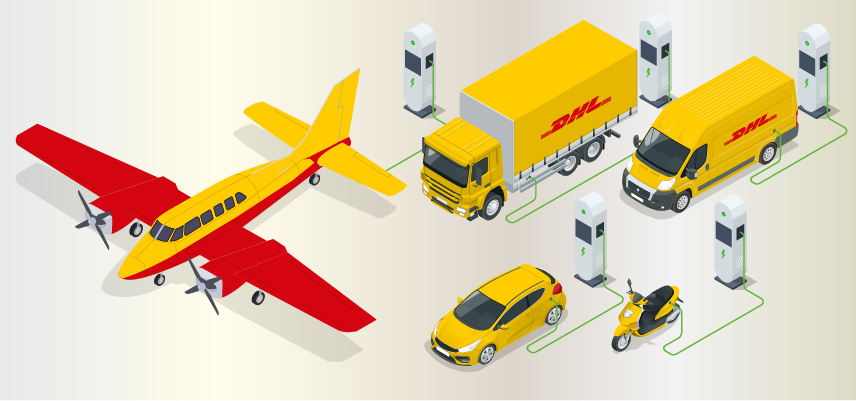Grow your business with the Discover newsletter
Logistics advice & insights straight to your inbox
Subscribe now
In January, PwC surveyed business leaders in select supply chain-intensive sectors about their main priorities over the next 12 to 18 months. “Increasing efficiency” and “managing or reducing costs” in supply chain operations were the leading answers amongst respondents, at 63% and 59% respectively1.
So, which logistics and delivery trends will help businesses achieve these objectives in 2023? Read on as we explore the ones to watch.

According to the McKinsey Global Institute, the transportation and warehousing industry has the third-highest automation potential of any sector2. AI (artificial intelligence), machine learning and blockchain can all be applied to help businesses optimize efficiencies, minimize mistakes and reduce costs along their supply chains. Examples of automation that will be making advancements in 2023 include:
Tipped by DHL’s Logistics Trend Radar as an emerging innovation, the next generation of autonomous mobile robots (AMRs) use real-time path planning to move more freely around obstacles, making them ideal for the fulfillment stage.
The technology is still relatively new, but “as soon as indoor mobile robots can be deployed at scale, they have enormous potential to reduce costs and increase efficiency within operations,” the trend radar notes.
It’s not always easy to predict consumer demand, particularly in the current economic climate, which leaves businesses at risk of having insufficient or excess stock.
Yet, automated inventory management software can play a crucial role, giving businesses complete visibility, in real-time, over their stock levels – even those held with third-party logistics providers. Further capabilities include analyzing sales patterns to help predict supply and demand; the automation of product listings based on inventory counts; and rechannelling marketing budget towards in-stock items.

According to research by Accenture, one of the most significant drivers of change within the logistics industry is customer expectations3, with 91% of companies acknowledging that customers are now asking for end-to-end logistics services handled by a single provider. Beyond traditional services like freight forwarding and customs brokerage, customers are now looking for logistics providers to also cover additional services such as reverse logistics, e-commerce management and analytics capabilities.
Fifth-Party Logistics (5PL) partners – such as DHL – have emerged as a valuable asset to businesses. As supply chains become increasingly complex, the 5PL model has evolved to meet the demands. A 5PL partner will handle all the logistical needs of a client, by first identifying their exact requirements, then by planning, executing and managing the entire solution. 5PL partners have the size and experience to source and manage other suppliers along the supply chain, and leverage the latest technologies to ensure every touchpoint is optimized. In short, 5PLs are an all-in-one solution able to meet all logistics needs and ensure everything runs on time. In 2023, with supply chains facing more disruptions, the role of 5PLs will be more important than ever.
“Traditional logistics companies have no choice but to change. They must become more responsive, more agile and resilient. Their customers count on it. And their relevance – and very existence – depends on it,” Accenture said4.

According to a NewVantage report5, nine out of 10 businesses have ongoing investments in AI. Increasingly, it is being applied for employee development: Gartner, for example, estimates that 20% of business content (including training content), will be written by AI by 20256.
This route allows businesses to reduce their overall onboarding times whilst also boosting the productivity and engagement of employees. The data-driven technology even has the ability to match employees to specific leadership positions based on skills and motivational factors.
Japanese start-up Attuned7 is already making headway in this space. The platform claims to “help companies build happier and more productive workplaces through science-backed data and AI, uncovering deep and actionable insights on what their employees need to be more engaged and fulfilled at work.”8 Attuned’s software can measure intrinsic motivations amongst employees so they can better understand themselves and empathize with colleagues.
Businesses are built on their people, so expect to see more invest in AI for job training and upskilling in the near future.

As any e-commerce business owner knows, delivery is an integral part of their service and the key to retaining long-term customers. Though emphasis has always been on fast delivery, there’s been a shift amongst more eco-conscious shoppers. A Descartes survey9 of consumers in Europe, the US and Canada found that 54% would be willing to wait longer for an order if it was being delivered via a sustainable method, whilst 20% would even be prepared to pay more.
In 2023, more companies will seek to find a balance between convenience and sustainability in their delivery options – a worthy investment, the Descartes survey says. “Rather than viewing sustainability as just another challenge, retailers need to see it for the huge opportunity [it] presents. Consumers intend to buy more from retailers that are perceived to be more sustainable.”
Electric vehicles are certainly not a new solution, but they’re leading a path for other innovations – such as electric airplanes. In September 2022, DHL made aviation history when its first-ever fully electric commuter plane successfully completed its maiden flight at Washington, USA. The “Alice” plane from Eviation Aircraft is one of a fleet of 12 the logistics leader has invested in on its goal of net-zero emissions by 2050.
By partnering with an environmentally responsible logistics provider, businesses can align their brand with eco-conscious customers’ expectations for final mile delivery.
Intrigued? Inspired? These examples are just a snapshot of the insights contained within the DHL Logistics Trend Radar. Discover more of tomorrow’s trends that can transform your business today, by diving into the report, here.
1 - PwC Digital Trends in Supply Chain Survey 2022
2 - Global Trade, November 2022
3 & 4 - Accenture, October 2021
5 & 6 - Supply Chain Brain, December 2022
7 & 8 - Attuned
9 - Descartes survey, FreightWaves, September 2022